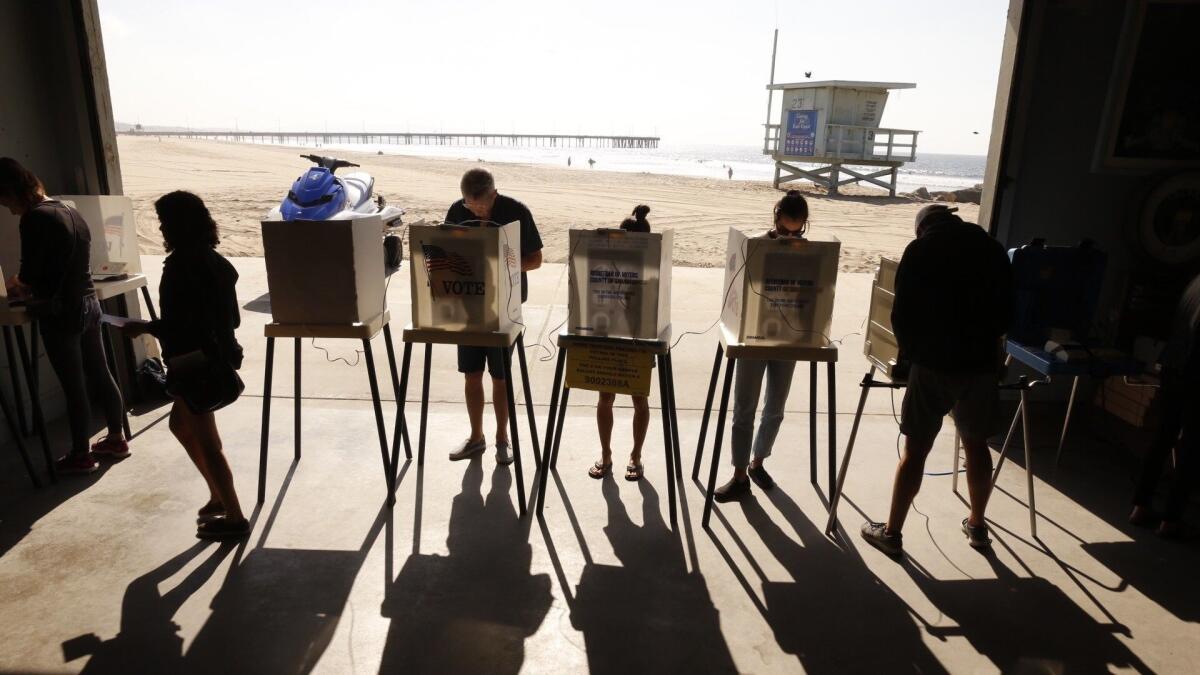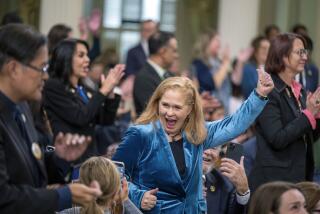Op-Ed: A third party in California? Sorry, not going to happen

Could the burgeoning number of independent voters in California constitute the basis for a third party, to compete with the Democrats and the Republicans? I regularly get calls from national political reporters asking for reaction to this prospect, and now some state-based pundits are suggesting California’s penchant for innovation will change the political-party equation.
There’s some logic to the notion. In 1994, the year I managed Gray Davis’ campaign for lieutenant governor, voters unaffiliated with a political party made up 10.3% of the electorate. In 2018, voters with “no party preference” (as the state’s election law now designates them) outnumbered Republicans for the first time in California history. Now, independents are 27.5% of registered voters, and Republicans, only 24%. That means more than 5 million Californians prefer no party to the other choices.
But you need only lightly scratch the surface of this situation and it is evident that three misunderstandings are feeding all the hypothesizing about a new and possibly centrist third party.
First, most “independent” voters are not really all that independent in their voting behavior after all.
Three misunderstandings are feeding all the hypothesizing about a new and possibly centrist third party.
The Public Policy Institute of California regularly surveys self-described independent voters, and it has consistently found that most of them actually lean toward one major party or the other. Last year, the institute reported that 43% leaned toward the Democratic Party, and 29% leaned Republican. Only 28% could be considered true independents — just about one-fourth of the one-fourth of all registered voters who are unaffiliated.
This was vividly demonstrated in the November midterm elections. Registered Democrats made up less than half — 43.5% — of the electorate, yet every Democratic candidate running for statewide office overwhelmingly won. Gov. Gavin Newsom won with 61.9% of the vote, and state Controller Betty Yee, the top vote-getter in all races, received 65.5% of the vote. No GOP statewide candidate received more than 38.1% of the total votes casts. The only way Democratic candidates tally those kinds of margins is by massively winning independent voters.
Even the first-ever no-party-preference candidate in a statewide runoff, Steve Poizner, lost the insurance commissioner race to his Democratic opponent, who received 52.9% of the vote. There was not a whit of evidence that independent voters were salivating for independent candidates, let alone for another party.
Second, most no-party-preference voters register as “NPPs” because — hello! — they clearly don’t want to belong to any political party. It’s not just Democrats and Republicans they’ve rejected. California offers voters four alternatives to the major parties — the American Independent Party, the Green Party, the Libertarian Party and the Peace and Freedom Party. The agendas of these groups stretch from far right to far left. To suggest that voters who register with no party — rejecting six choices total — are just itching to join a yet-to-be-formed political group doesn’t match their apparent motivations.
Finally, in all my years of studying hundreds of political surveys and observing myriad focus groups in California, I’ve found that independents are not the optimal raw material from which to form a viable new political movement. They are generally among the least engaged and least informed of all voters.
Enter the Fray: First takes on the news of the minute »
I doubt these voters — some of whom are first-time registrants but most of whom are dropouts from the Democratic Party or Republican Party — have enough in common to coalesce into a third party. Think of it this way, millions of Americans have left the Catholic Church and mainline Protestant denominations. Would you expect a bunch of ex-Catholics, former Methodists and lapsed evangelicals to have the kind of doctrinal uniformity required to form a brand-new denomination?
The majority of no-party-preference voters not only lean toward one of the major parties, they also admit to the Public Policy Institute that they are mostly either liberal or conservative — only four in 10 view themselves as ideologically middle-of-the-road. Not exactly the makings of a centrist third way.
The next time you hear someone frothing over the prospect of a third party magically rising from the growing numbers of California’s independent voters, take it with a large dose of skepticism. Ain’t gonna happen.
Garry South is a veteran California Democratic political strategist and commentator who managed Gov. Gray Davis’ 1998 and 2002 campaigns and has been an advisor to three presidential campaigns.
Follow the Opinion section on Twitter @latimesopinionand Facebook
More to Read
A cure for the common opinion
Get thought-provoking perspectives with our weekly newsletter.
You may occasionally receive promotional content from the Los Angeles Times.










